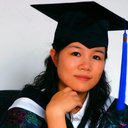Belarusian
Albanian
Arabic
Armenian
Azerbaijani
Belarusian
Bengali
Bosnian
Catalan
Czech
Danish
Deutsch
Dutch
English
Estonian
Finnish
Français
Greek
Haitian Creole
Hebrew
Hindi
Hungarian
Icelandic
Indonesian
Irish
Italian
Japanese
Korean
Latvian
Lithuanian
Macedonian
Mongolian
Norwegian
Persian
Polish
Portuguese
Romanian
Russian
Serbian
Slovak
Slovenian
Spanish
Swahili
Swedish
Turkish
Ukrainian
Vietnamese
Български
中文(简体)
中文(繁體)
Journal of Neuroimmunology 2019-Oct
Перакладаць артыкулы могуць толькі зарэгістраваныя карыстальнікі
Увайсці / Зарэгістравацца
Спасылка захоўваецца ў буферы абмену
Самая поўная база дадзеных пра лекавыя травы, падтрыманая навукай
- Працуе на 55 мовах
- Лячэнне травой пры падтрымцы навукі
- Распазнаванне траў па малюнку
- Інтэрактыўная GPS-карта - пазначце травы па месцы (хутка)
- Чытайце навуковыя публікацыі, звязаныя з вашым пошукам
- Шукайце лекавыя зёлкі па іх уздзеянні
- Арганізуйце свае інтарэсы і будзьце ў курсе навінавых даследаванняў, клінічных выпрабаванняў і патэнтаў
Увядзіце сімптом альбо захворванне і прачытайце пра зёлкі, якія могуць дапамагчы, набярыце траву і паглядзіце хваробы і сімптомы, супраць якіх яна выкарыстоўваецца.
* Уся інфармацыя заснавана на апублікаваных навуковых даследаваннях




